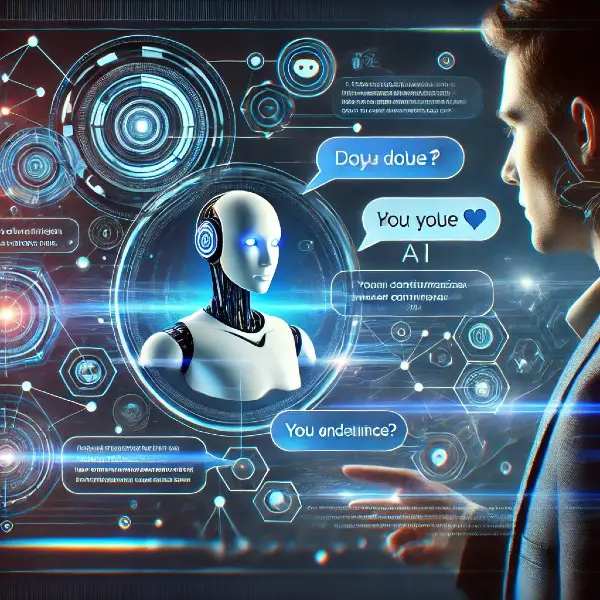Artificial Intelligence (AI) has become a significant part of our daily lives, influencing everything from the way we shop to how we communicate. However, one aspect of AI, known as “Black Box AI,” remains a mystery to many. This term refers to AI systems where the decision-making process is not transparent or understandable to humans. It’s like having a robot that makes decisions, but we can’t see or understand how it’s making them. This guide aims to demystify Black Box AI and make it understandable for everyone, especially those in the eighth grade or with a similar level of education.
In this exploration, we’ll delve into various aspects of Black Box AI and its relation to other important areas like healthcare, the general public’s understanding, and ethical AI. By breaking down these complex concepts into simpler, more digestible parts, we aim to provide a clearer picture of what Black Box AI is, how it works, and why it matters in our increasingly tech-driven world.
Healthcare and Black Box AI
When it comes to healthcare, Black Box AI can seem like something from a sci-fi movie. Imagine doctors using AI to help diagnose diseases or suggest treatments, but they can’t exactly explain how the AI came up with its conclusions. This can be both fascinating and a bit scary. On one hand, AI can analyze huge amounts of medical data much faster than a human, potentially finding patterns and solutions that humans might miss. On the other hand, not knowing how it arrives at its conclusions can be a problem, especially in healthcare where decisions can be life-changing.
The second aspect in healthcare is trust. If doctors and patients don’t understand how the AI works, they might not trust its suggestions. This trust is crucial in medicine. For example, if an AI recommends a new treatment, but the doctor doesn’t understand why, they might be hesitant to use it. Similarly, patients might be uneasy about a machine having a say in their health decisions. It’s like using a mystery medicine without knowing what’s in it.
Black Box AI and the General Public
The general public’s understanding of Black Box AI is often filled with misconceptions. Many people think of AI as robots with human-like intelligence, but it’s more about computer programs that can learn and make decisions. The “black box” part is because, for most people, how AI makes these decisions is hidden or not clear. It’s like having a smart assistant who helps you but never explains how they know so much.
The impact of Black Box AI on everyday life is significant. From the movies Netflix recommends to the way Facebook filters news feeds, AI influences what we see and do online. But since most people don’t understand how it works, there can be a lack of trust. This lack of understanding can lead to fear and misconceptions about AI, like believing that AI could become too smart and take over, which is a common theme in movies but not really how AI works.
Ethical AI and Black Box AI
Ethical AI is about ensuring that AI systems are fair, transparent, and beneficial to society. With Black Box AI, this becomes challenging. If we don’t understand how an AI system makes decisions, how can we ensure it’s fair or unbiased? This is like having a judge who makes decisions but never explains why; we wouldn’t know if they’re being fair.
One of the biggest concerns with Black Box AI in terms of ethics is bias. AI systems learn from data, and if this data has biases, the AI can learn these biases too. For example, if an AI system is trained on job applications and the data has a bias against a certain group of people, the AI might also develop this bias. This could lead to unfair decisions, like not recommending qualified candidates for a job simply because of their background.
Myths vs. Facts about Black Box AI
Myth 1: Black Box AI is always intelligent and conscious. Fact: Black Box AI is not conscious or sentient. It’s a complex algorithm that processes data and makes decisions based on that data. It doesn’t have awareness or feelings like humans.
Myth 2: AI can always explain its decisions if asked. Fact: In the case of Black Box AI, even the creators may not fully understand how it arrives at certain decisions. This is because of the complex nature of the algorithms and the vast amount of data they process.
Myth 3: All AI will eventually become Black Box AI. Fact: Not necessarily. There’s a growing emphasis on developing transparent and explainable AI, where the decision-making process is understandable to humans.
FAQ on Black Box AI
What is Black Box AI? Black Box AI refers to AI systems where the decision-making process is not transparent or understandable. It’s like having a complex equation where you see the input and output but don’t know what happens in between.
Why is it called a “black box”? The term “black box” is used in science and engineering to describe a system where you can see the input and output but not the internal workings. In Black Box AI, we see the data going in and the decisions coming out, but we don’t see how the AI is making those decisions.
Is Black Box AI reliable? Black Box AI can be very effective and reliable in certain applications, especially where large amounts of data are involved. However, the lack of transparency can be a concern in critical areas like healthcare or justice.
Can Black Box AI be dangerous? If not carefully managed and regulated, Black Box AI could potentially make biased or incorrect decisions without humans understanding why. This makes it crucial to approach Black Box AI with caution, especially in sensitive areas.
Will AI always be a black box? Not necessarily. There’s a lot of research and development going into making AI more transparent and explainable. The goal is to create AI systems where humans can understand and trust the decision-making process.
Google Snippets
- Black Box AI: “A type of AI where the decision-making process is not transparent or understandable to humans. Often involves complex algorithms processing large datasets.”
- Healthcare AI: “AI in healthcare refers to the use of machine learning algorithms and software, or artificial intelligence (AI), to mimic human cognition in the analysis, interpretation, and comprehension of complicated medical and healthcare data.”
- Ethical AI: “Ethical AI involves creating AI systems that make decisions in fair, unbiased ways, ensuring they are transparent and beneficial to society.”
Black Box AI Meaning: From Three Different Sources
- Tech Encyclopedia: “Black Box AI is an AI system whose inner workings are not known or understood by its creators, characterized by a lack of transparency in its decision-making process.”
- AI Research Journal: “Refers to AI systems where the rationale behind decisions or predictions is not visible or comprehensible to humans, posing challenges in accountability and trust.”
- Popular Science Magazine: “A term for AI that operates in a way humans can’t easily follow or understand, like a machine with decisions emerging from an opaque process.”
Did You Know?
- The term “black box” originated from World War II, referring to flight data recorders whose contents were often mysterious to those not trained in their analysis.
- Some AI systems can teach themselves new strategies for solving problems, which can lead to unexpected and unexplainable decisions.
- The concept of Black Box AI raises philosophical questions about the nature of intelligence and the possibility of creating machines that think like humans.
In conclusion, Black Box AI represents a fascinating yet complex aspect of modern technology. Its implications in fields like healthcare, public perception, and ethical considerations highlight the need for a balance between technological advancement and transparency. Understanding Black Box AI is crucial not just for technology enthusiasts but for everyone, as it increasingly influences various aspects of our lives. By demystifying this concept and promoting awareness, we can better appreciate the wonders of AI while being mindful of its challenges and limitations.
https://earn-money.ai/embracing-the-power-of-chatgpt-login/
https://earn-money.ai/embracing-the-power-of-chatgpt-login/
https://ai-benefits.me/beyond-ai-pioneering-user-design-with-chatgpt-login/
References
- Explainable AI that uses counterfactual paths generated by conditional permutations of features. This method is used to measure feature importance by identifying sequential permutations of features that significantly alter the model’s output. The paper discusses the evaluation strategy of comparing the feature importance scores computed by explainers with the model-intern Gini impurity scores generated by the random forest, which is considered as ground truth in the study.
- Thinkful offers insights on how to address the “black box” problem in AI through Explainable AI (XAI) and transparency models. They discuss techniques like Feature Importance Analysis, Local Interpretable Model-agnostic Explanations (LIME), SHapley Additive exPlanations (SHAP), Model Distillation, and Decision Rules, which are designed to make AI models more interpretable and transparent. This is especially important in applications where decisions can have far-reaching consequences, such as healthcare or finance







